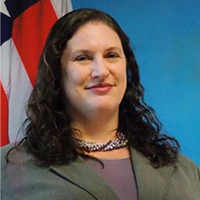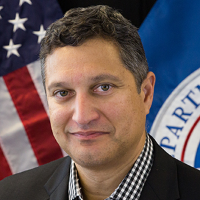Overview
The Fast-Track Action Committee (FTAC) on Cyber-Physical Systems Resilience (CPSR) was established in 2024 to coordinate and advance federal efforts to strengthen the resilience of the Nation’s critical cyber-physical systems. The CPSR FTAC is principally supported by the Networking and Information Technology Research and Development (NITRD) Program’s Computing-Enabled Networked Physical Systems (CNPS), Cybersecurity and Information Assurance (CSIA), and Artificial Intelligence R&D (AI R&D) Interagency Working Groups (IWGs).
The CPSR FTAC has been tasked by Office of Science and Technology Policy (OSTP) and NITRD to develop a National Plan for Cyber-Physical Resilience Research, outlining key priorities for research objectives aimed to improve the cyber-physical resilience of our Nation’s critical infrastructures. As described below:
- Cyber-physical resilience is the capacity of an integrated system to keep running—even if not at peak performance—should it lose specific functions. Challenges include degradation or cessation of one or more aspects of the computational or physical functions due to component failures, human errors, natural disasters, or malicious attacks. For instance, if one or more of computer-based controls, sensors, or Internet communications employed in a water treatment plant fail, the system should continue to operate, by relying on backup systems and plans, auxiliary sensors, or manual controls.
- Cyber-physical systems are physical systems that rely on computing technologies for sensing, analysis, tracking, controls, connectivity, coordination, or communications. Most of the systems we depend upon across sectors, spanning our electricity, water, healthcare, communications, transportation, manufacturing, and defense, are now cyber-physical in nature.
The FTAC is co-chaired by the Office of Science and Technology Policy (OSTP), National Science Foundation (NSF), National Institute of Standards and Technology (NIST), and Subcommittee on Resilience Science and Technology (SRST).
Co-Chairs
 |
David Alexander Senior Science Advisor – Resilience Office of Science & Engineering Science & Technology Director U.S. Department of Homeland Security |
 |
Cheri Caddy Senior Technical Advisor for Cybersecurity Office of Cybersecurity, Energy Security & Emergency Response U.S. Department of Energy |
 |
Kirk Dohne Director, National Coordination Office Networking and Information Technology Research and Development Program |
 |
Martin Stanley Senior Advisor for Risk Management Office of Emerging Technologies National Institute of Standards & Technology |
Technical Coordinator
 |
Melissa Cornelius |
Membership
The FTAC includes representatives from across the Federal Government, bringing a whole-of-government approach to advancing cyber physical systems to advance and assure integrated IT-enabled cyber, physical, AI, and human systems.
↑ Top
Coordinated Activities
- Federal Register Notice: 89 FR 78915, “Networking and Information Technology Research and Development Request for Information on a National Plan for Cyber-Physical Systems Resilience”, September 26, 2024. Public Responses October 26 2024.
References
- Achieving Efficiency Through State and Local Preparedness, The White House, March 19, 2025.
- Charge to the Fast-Track Action Committee on Cyber-Physical Systems Resilience, August 27, 2024.
Can’t Find What You Need?

